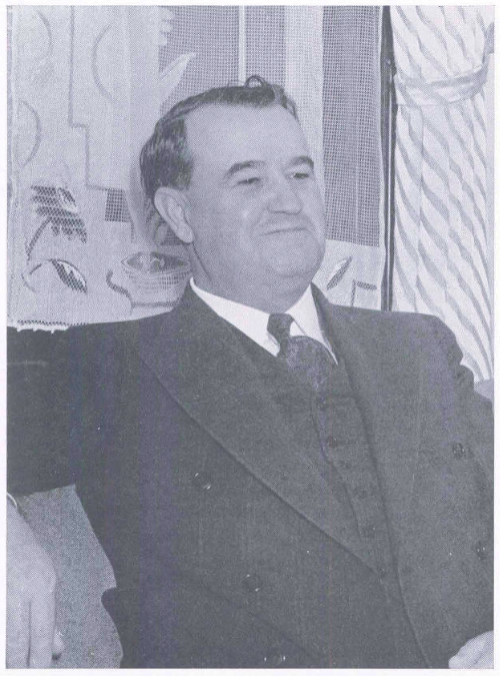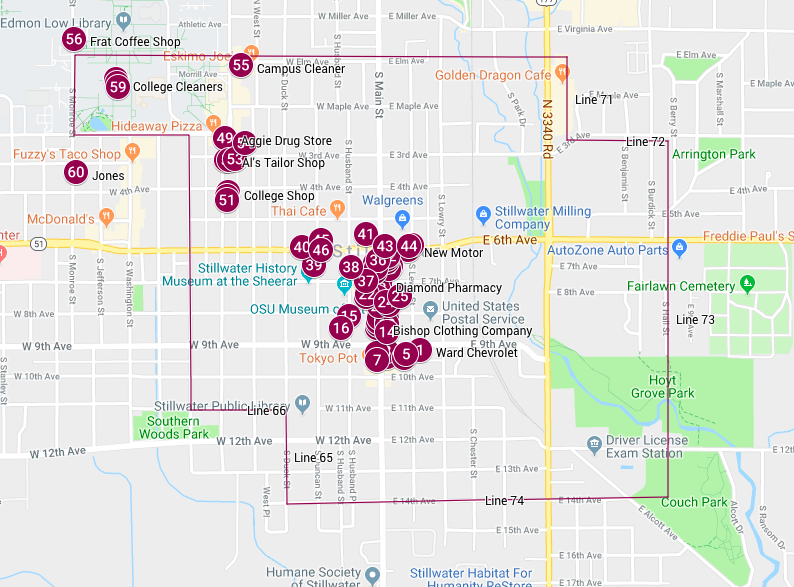This week, Oklahoma State University is celebrating the WAVES program and their contribution to World War II. This week emphasizes the collection at Oklahoma State University and the WAVES collection landing page gathers information created by students a faculty from all over the university. Today’s blog post focuses on Henry Bennett, the president of OSU during the 1940s and an important part of bringing the WAVES to OSU. Click here to visit the WAVES landing page to view the digital collection, supplemental information, and children’s activities.

The Women Accepted for Voluntary Emergency Service program was a major facet of life at Oklahoma State University during World War II. It can be argued that the presence of the WAVES program, as well as a variety of other military training programs, allowed the college to remain open throughout the war. The beginning of the WAVES’ time at OSU can be traced back to Henry Bennett, president of OSU and a man with an enduring legacy. Today’s blog post explores his work at the college during World War II and with the WAVES program.
President Bennett was used to hard times. President from 1928 to 1950, the stock market crashed not long after he began running the college. By the end of the 1930s, the financial situation began to look up, but America’s entrance into World War II brought a second threat of financial ruin (Yearbooks). Young men left the college in droves to join the military and with the fall in revenue from the student’s tuition, the college realized that they could quickly be in dire financial need. From our knowledge of Bennett’s character and the letters he left behind, we can confidently assume that he was quick to act. A man of immense energy, Bennett’s children said that he could often be found awake in the middle of night working furiously (Peters). While we are unable to say with certainty what role Bennett held in bringing the WAVES to campus, a multitude of letters in OSU’s archives show Bennett’s involvement in preparing for the arrival of the WAVES and making sure that they would be well taken care of. Because of these letters and his role as president, we can be sure that Bennett was important factor in bringing the WAVES to campus.
The WAVES program was a novelty. Before the 1940s, women had not been allowed to serve in the military unless they worked as nurses. However, with the advent of World War II, an immense amount of men were needed to fight. The military decided to mobilize the men who served in clerical duties and replace them with female workers. Before the war, it was considered unfeminine for women to work outside the home (though it must be noted that this was only realistic for a specific portion of society) and women were not allowed in the military. In the time of a national emergency, society began to make an exception and women were allowed in the military (Anderson). Regardless of the war time situation, many branches were not thought of highly. The WAVES were different in this respect, and documents in OSU’s archive show that the citizens of Stillwater and the college welcomed the WAVES with open arms and were extremely proud of the college’s role in serving the country (Water Daughters).
Creating whole new branches of the military from scratch on a limited amount of time proved to be a massive problem. For the male service branches, the military could use preexisting structures for recruitment and training. For the women, however, there were no recruitment or training centers in place. (How these women were recruited can be explored in a previous blog post.) It became patriotic for colleges to give up their space to be used by the military (Yearbooks). In his characteristically energetic style, Bennett wooed many branches of the military to train at OSU, perhaps the largest being the WAVES program. While Bennett may not have intended this initially, the military eventually overran the entire school (Yearbooks). Many of the dorms were given to the military, the WAVES took over Morrill Hall, and many teachers from the business school were enlisted to teach the WAVES (Yearbooks).
Though Bennett had coerced the military to train at OSU, there were still problems a plenty. One of Bennett’s letters to the military showed that the college had been promised a large number of military men, but had not received the full quota. The college had set aside a whole dorm for the men, but half the dorm remained empty and could not be filled with civilian students (Correspondence regarding cancelled quota). Bennett’s careful management of the college’s affairs and willingness to speak up allowed the college to flourish during this period.
Today, a large but kind looking statue of Henry Bennett peers at students playing Frisbee on Library Lawn. Though most students walk past the statue unawares, Bennett’s legacy at the college remains unheeded by many but strong nonetheless. His tireless work during World War II in bringing the WAVES to campus procured a way for the college to not just to survive, but thrive. A great man, Bennett must be thanked for the legacy that he left the college.
